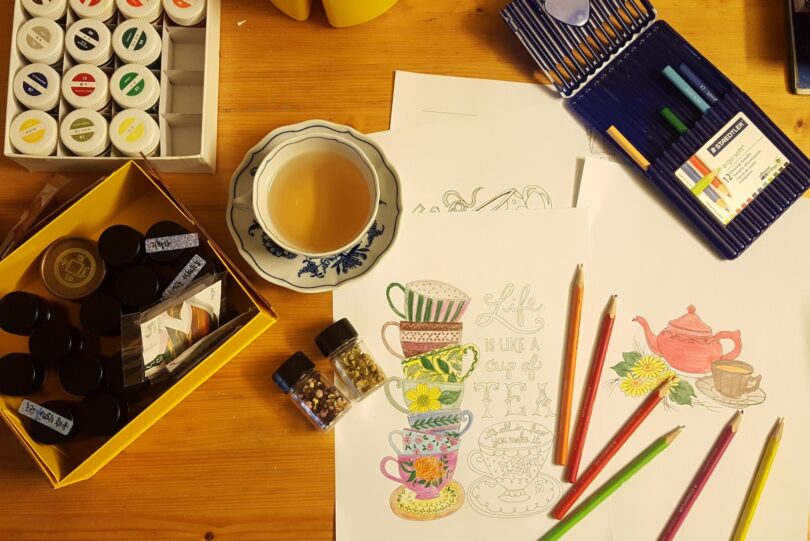Color therapy, or chromotherapy, is a therapeutic technique that uses colors to enhance an individual’s mood and promote relaxation. This holistic approach is based on the principle that each color has a unique effect on our body and mind. By engaging with color therapy, the belief is that one can elevate their overall health and well-being.
Coloring, a popular activity for people of all ages, can also be a simple and effective way to engage with color therapy. In this article, we’ll delve into the specific effects of different colors on our emotions and state of mind and discuss how incorporating coloring into your daily routine can have a positive impact on your well-being.
The Influence of Different Colors on Mood
Colors have a profound ability to affect our mood and emotions. Unique colors can elicit various responses in people, making it essential to pay attention to the colors in our surroundings. When using color therapy for relaxation and mood improvement, here are some important aspects to consider.
Red: The Energizing Color
Red is a highly stimulating color known for its energizing effects. It can raise heart rate and blood pressure, making people feel more alert and active. However, it has also been linked to intensifying feelings of anger and aggression, so it might not be the best choice when seeking relaxation through color therapy. Nevertheless, red can be an excellent option when you need an energy boost or want to stimulate creativity and motivation.
Blue: The Calming Color
Blue is renowned for its calming effect on our emotions and psyche. It can help reduce blood pressure and heart rate, fostering feelings of tranquility and serenity. In addition to its soothing properties, blue is also associated with trust and stability, making it an ideal color for creating a peaceful and supportive environment.
Green: The Harmonious Color
Evoking a sense of nature, green is known for its soothing and harmonious effects. It can promote relaxation and emotional balance, making it an excellent choice for mood improvement through color therapy. The restorative quality of green can help alleviate stress and create a sense of calmness in your surroundings. Moreover, green is linked to growth, renewal, and a connection with the natural world, further enhancing its restorative powers.
Yellow: The Joyful Color
Vibrant and cheerful, yellow has the unique ability to brighten your mood and heighten feelings of happiness and joy. As a color often associated with sunshine, optimism, and warmth, yellow can provide an uplifting atmosphere when used in your living space. Incorporating yellow in various forms, such as clothing, home decor, or even through natural elements like flowers, can yield positive results.
Purple: The Luxurious Color
Associated with royalty and luxury, purple combines the energy of red with the tranquility of blue, creating a sense of opulence and grandeur. It is often linked to creativity, spirituality, and higher consciousness, making it an ideal color for meditation and introspection. Purple can provide a stimulating yet soothing atmosphere that encourages deeper thought and imagination.
In summary, color therapy offers a range of options for influencing our mood and emotional state. By exploring the impact of colors like red, blue, green, yellow, and purple, you can create an environment that caters to your specific emotional needs and supports your overall well-being. Experiment with these colors in your living space, wardrobe, or daily activities to discover their unique benefits and enhance your mood and emotions.

